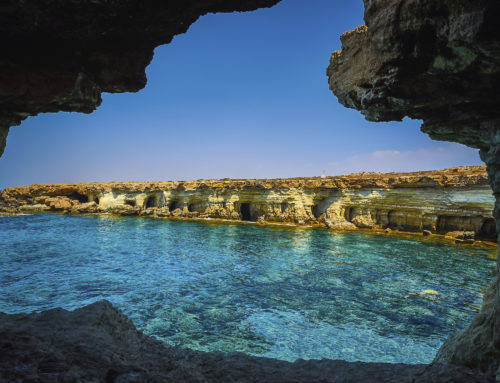Sheshan Golf Club
It’s not only China’s golfers that are making their mark on the sport, it’s also the world-class courses of their homeland
To talk of China’s potential in any sport, is to state the obvious. When your population is upwards of a billion or so, you can pretty much achieve anything you set your mind to. The rule certainly applies to golf, and while America might not be looking over its shoulder and worrying about its golfing superpower status just yet, China is coming up on the rails.
A look at the world rankings doesn’t give much cause for concern. The top 100 has Li Haotong at number 64. But don’t be fooled by his modest position.
In 2015, as a 20-year-old debutant, he joined the tour with aplomb, taking the Volvo China Open title at Beijing’s Topwin Golf and Country Club with a final round of 64. And only last year, he secured T2 at the Turkish Airlines Open and with it, the prize purse of €557,077 (£496,848).
But it’s not the potential of Li that’s made the sport take note, it’s over in the women’s game, where you only need glance at the top six rankings to find your first Chinese player, namely Guangzhou-born Shanshan Feng.
A perennial contender in all the majors, and winner of several LPGA tour events, Shanshan’s real moment in the Chinese spotlight came at the Olympics — the doyen of all sporting occasions in the eyes of both officials and the public in China — when she captured a bronze medal in Rio. “If anybody [of the four Chinese players in the Olympic tournaments] can have a good result, maybe a medal, it’s going to really change everything about golf in China,” she said at the time. “And of course, I mean, I made it, so that made me even more happy about it.”
That bronze medal — a single shot shy of silver — was truly worth its weight in gold to China’s golfing community. For the Olympics, golf had found its way from the niche cable channels to mainstream television, so everyone could celebrate Shanshan’s efforts.

Mission Hills
Natural wonders
China’s wannabe golf Olympians — and indeed those of us looking for a new destination to take our clubs — have some truly spectacular settings from which to choose. Just as the nation’s playing numbers are on the rise — thought to be upwards of five million — so too are the courses. Even though a clutch were shut down in an official clampdown in 2015, the building of resorts and clubs has been fervent since the millennium. A new report states that there are close to 500 courses with a further 56 in development, and as with so many things, China doesn’t do things by halves.
Take Skydoor Golf Club in Zhangjiajie, Hunan — a more rural setting, showing the very best of the Chinese landscape. Designed by American architect Richard Mandell on the doorstep of Zhangjiajie National Forest Park, facing the cave of Tianmen Mountain. The main 18 covers 342-acres and works its way through a land of jungle, wetlands and lakes, with Mandell using every trick in his book to create a course that’s challenging but still in keeping with the surrounding geography.
Balancing nature with the demands of a modern day golfer is key to the success of rural courses in China — the courses on offer are occasionally so ethereal, they could only be built here. With such unique landscapes as a canvas, the golfing picture painted could be one of the most stunningly unique in the world — as long as it can get the golf aficionados on board. Too hard and they’ll worry about their handicap, too easy and they won’t bother making the trip. To the traveller who just wants to play in an incredible location, it’s hard to go wrong with any course in the more remote regions of China.
Jade Dragon Snow Mountain Golf Course in Yunnan is a par 72 facing the mountain from which it got its name. It’s also the second-highest in the world at 10,170ft above sea level, the longest par 72 and its fifth hole — par five, 711 yards — is the longest par five on the planet. This is a course that manages to set records while also being a true natural, woodland, beauty. But as easy as it is on the eye, it’s not so easy on the scorecard — the shortest par four is 436 yards. Don’t expect to beat your handicap, but you won’t care too much, not with the view of the snow-topped Jade Dragon Snow Mountain to ease your woes.
Completing a trio of picture-postcard courses is Stoneforest International Golf Club, also in Yunnan. The name gives it away: this three championship course destination is set within a UNESCO World Heritage Site, with each course meandering its way through the karst peaks, giving it a truly stone-age feel. Amid wildly varied rock formations, there’s no place quite like this, you’re playing amid truly one of the world’s great natural wonders. And although you’ll no doubt need to be mindful of dangerously ricocheting golf balls, you’ll be hard-pressed to find a course as bewitching as this one.

Mission Hills, Hainan
Three top 100 courses
Naturally, bucket-list golfers often start their list of courses with Golf Digest’s top 100, and considering China’s comparative infancy in the market, three entrants in this US and UK-dominated listing is impressive.
A regular on the listing — and currently placed 86 — is Shanghai’s Sheshan Golf Club. Perhaps one of China’s most well-known courses due to it hosting — for all but one year when Mission Hills hosted it, more of whom later — the WGC-HSBC Champions tournament since 2005. The prize fund is just shy of $10m (£7.62m), which gives you some idea of the calibre of the course itself. Globally renowned architects Nelson & Haworth are the masterminds behind the 18 holes and they’ve gone about their work with aplomb, creating a course that’s been voted China’s best and has hosted the likes of Tiger Woods, Rory McIlroy and Phil Mickelson.
Yunnan, specifically Kunming, provides another entrant with the lakeside Robert Trent Jones Jr-designed Spring City Golf and Lake Resort coming in at 75. Hugging the shoreline of the Yangzonghai Lake, the 7,2004-yard, par-72 Lake Course is challenging with tight, narrow fairways. Given that the resort’s other course, the Mountain, is designed by Jack Nicklaus, it’s a golfing nirvana and the golf lodges and villas offer perfect overnight luxury.
Ranking far above these two stalwarts of the Chinese golf scene — both of whom simultaneously claim to be the nation’s best — is a comparative newcomer, Shanqin Bay Golf Club on Bao’ao, Hainan Island, off the south coast, near Guangdong. The tropical island location is only one tick-in-the-box of many. It overlooks the South China Sea, has a sandy beach alongside and is the work of Bill Coore and Ben Crenshaw, whose work includes Tasmania’s Lost Farm at Barnbougle — elements of which you can find delicately echoed in Shanqin Bay. There’s the roughest of rough terrain, wind-swept fairways abound and ridge-top greens that you’ll need to be careful not to miss, it’s a coastal course that’s almost as challenging to play as it was to build on this mountainous landscape. The only thing harder in fact is getting a tee time — it’s super exclusive (a reported double-digit membership), but if you do manage to get on, that exclusivity means you rarely see other golfers all day.
The record-breaking resort
The naturally breathtaking and hottest-ticket-in-town get rolled into one when it comes to Mission Hills, without doubt the daddy of all golfing utopias in China.
It has exclusivity and accessibility all at the same time, but with an incredible 22 courses across three sites, that’s hardly surprising. What started out as a solitary course with a clubhouse in 1992, expanded quickly after winning the rights to host the World Cup of golf. A clubhouse was joined by a five-star hotel, two courses became four, then five (by 2001); one site became three and suddenly China had the world’s biggest golf resort.
All three resorts lie in the south. Shenzhen (10 courses) and Dongguan (five) are pretty much adjoined, whereas the world-record holder Haikou is on the tropical island of Hainan with its dozen courses over nearly eight square miles. The 350-acre Blackstone — given its name by the volcanic rock on which its built — is the signature course, and rightly so, having given World Cup contenders in 2011 plenty of testing times with its tricky route carved out of the most rugged landscape and thick vegetation, not to mention wetlands and lakelands.
You could write an endless tome on platitudes for the golf of Mission Hills, but for some its key attraction exists off the course. Not content with just offering up your predictable five-star hotel and spa offering, or even restaurants serving up every cuisine both local and European, Mission Hills has some very notable extras. It could be the vast area of volcanic mineral springs that grabs your attention, or maybe even the water theme park with its slides, water guns, beach soccer and volleyball courts.
Perhaps even more tempting could be the new Centreville resort, a vast entertainment, retail and leisure complex including one of the world’s largest duty-free shopping malls, a cinema, restaurants and hotels including a Ritz-Carlton and Hard Rock Hotel.
But most extravagant of all has to be Movie Town, a collaboration between Mission Hills, a film studio and famed Chinese movie director Feng Xiaogang. Together they built a whole town based on famous scenes from Xiaogang’s flicks. You’ll find ‘districts’ such as 1942 Street, based on the film Back to 1942, which is basically an area full of buildings from the Republican era across four cities Chongqing, Wuhan, Nanjing and Shanghai.
Other areas take you to the 19th century; 1950s Beijing; an area of European churches and town squares; an Avenue of Stars featuring international celebrities; and of course an actual movie studio, so you can see how the real thing is made.
Movie Town might seem at odds with your traditional golf resort, but so too is Mission Hills. Unlike any other golfing destination on the planet, it’s made every effort to be world-beating both on the course and off it. It doesn’t shy away from giving the kids exactly what they want and isn’t afraid to break with every golf resort convention in order to do so.
Even with a whole town based on a town in a film, which is based on a town in real life, Mission Hills makes total sense. It’s perhaps the only golf resort in the world where the sideshows battle the golf for headline status. Either way, the only winner is the golfer. And, given some of the holes on Blackstone, perhaps the only loser is your handicap.
One thing is for sure, if the ambition of Mission Hills is anything to go by, China’s famed golfing potential will be realised sooner than anyone might have expected.






